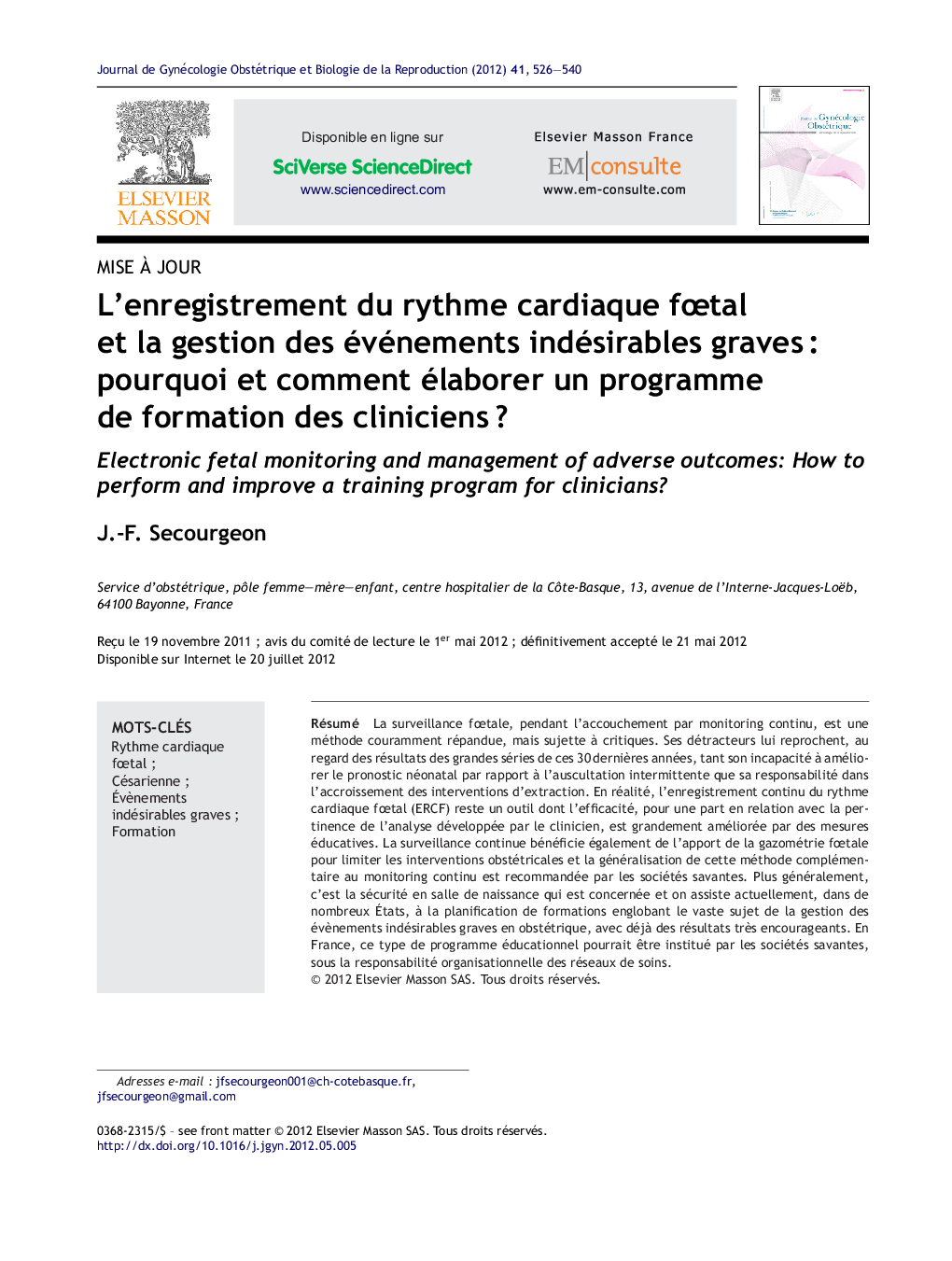| Article ID | Journal | Published Year | Pages | File Type |
|---|---|---|---|---|
| 3272599 | Journal de Gynécologie Obstétrique et Biologie de la Reproduction | 2012 | 15 Pages |
Abstract
Electronic fetal monitoring during labor is the most commonly used method to evaluate the fetal status, but it remains exposed to some criticism. By comparison with intermittent auscultation and in the light of the results of the great studies in the last 30Â years, it may be accused its failure to improve the neonatal outcome and its responsibility in the increase on operative deliveries. Actually, the electronic fetal monitoring is a tool whose effectiveness is linked to the accuracy of the analysis developed by the clinician. Studies on assessment of the tracing interpretation indicate that there is always a lack of quality, which may be improved through training programs. It also reveals the benefit of the fetal blood sampling to reduce operative deliveries and the generalization of this method, in addition to electronic fetal monitoring, is recommended by referral agencies. More generally, the continuous monitoring is only a part of the patient safety strategy in the labour ward and we are currently observing, in some European countries and in the United States, the development of training programs concerning the management of the adverse outcomes in obstetrics. The good performances related to the quality of care are demonstrated by the findings of the studies performed in the centers that have implemented an active training policy. In France, the professionals directly involved in the field of the perinatology should benefit from such educational programs that could be organized within the care networks under the authority of referral agencies.
Keywords
Related Topics
Health Sciences
Medicine and Dentistry
Endocrinology, Diabetes and Metabolism
Authors
J.-F. Secourgeon,
